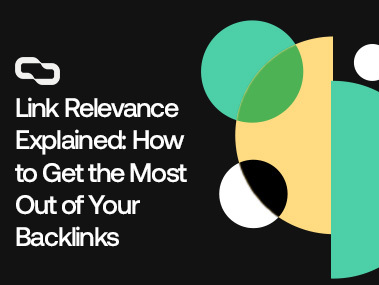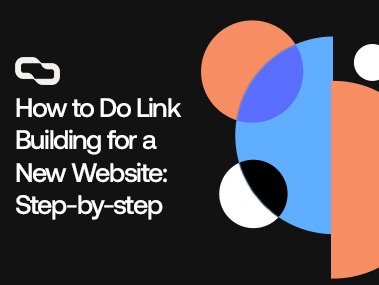Get links on brand new relevant articles for a boost of Authority and Relevance that’ll catapult your SEO. Our links include both DR and Traffic, so you don’t have to choose between one or the other.

Google doesn’t want you to build backlinks.
In fact, building links to “manipulate rankings” is against their guidelines.
And they’ll penalize your website if they catch you doing it.
However, Google isn’t as smart as you think.
It doesn’t go through each backlink you have and investigate whether you earned or bought it.
Instead, it looks for certain telltale signs that suggest manipulation.
In other words, unnatural links.
We have been building backlinks professionally for over 5 years now.
And in this article, I’ll share with you everything we’ve learned about identifying and avoiding unnatural links.
You’ll learn what makes a link unnatural, types of unnatural links, how to detect them, and what to do with them.
Key Takeaways
- Unnatural links are low-quality links created to manipulate Google’s search results.
- Websites employing shady link-building techniques and accumulating low-quality, unnatural links face penalties from search engines like Google.
- Examples of unnatural links include link farms, cheap PBNs, hacked links, and over-optimized links.
- Opinions vary on managing unnatural links. Some suggest disavowing them due to potential negative impacts on rankings and traffic, despite Google’s ability to recognize and ignore low-quality links.
What Are Unnatural Links?
Unnatural links are any type of link that is created to manipulate a site’s ranking in search engine results pages.
But wait a minute, doesn’t that mean every link you actively build is considered unnatural?
After all, the purpose of link-building is to climb the Google search results — right?
Well, not really.
When we talk about unnatural links, we mainly refer to the super low-quality that Google can tell that you’re building.
Think of link farms, cheap PBNs, automated link-building software, and all the other spammy link-building tactics.
I’ll get into the different types of spammy links in a few minutes.
But for now, let’s just agree that unnatural links are the ones that Google can tell that you’re building to manipulate the algorithm — not links that you earned “naturally.”
Types of Unnatural Links
Let’s take a closer look at each type of unnatural link and understand why they’re problematic.
1. Link Farms
Google became the tech giant it is today because of the PageRank algorithm.
While every major search engine at the time relied heavily on on-page factors, such as keyword density, headers, and URLs, Google took a different path.
It used the quality and quantity of backlinks to determine the popularity of web pages and rank them accordingly.
Now, SEOs saw a loophole.
Since the algorithm accounted for the number of backlinks, sending thousands of low-quality links could deceive the algorithm into thinking that this page is super important.
And that’s where link farms came into play.
Link farms are networks of websites created for the sole purpose of linking to each other to boost their rankings.
They offer no real value, functioning only as a link-producing factory.
Although Google has gotten a lot smarter at detecting these types of links, carefully executed link farms can still provide a lot of value — until they don’t.
Link farms are considered a black hat link-building technique.
Every day Google finds and penalizes thousands of websites that engage in such link schemes.
That’s why you should never use link farms — at least on your tier 1 links.
What most SEOs do is that they use link farms to power up their tier 2 and 3 backlinks.
For more information on how to safely use link farms, check our tiered backlinks guide
2. Automated Link Building Software
This is where technology comes in, but not in a good way.
Some SEOs use automated software to generate links.
These tools create hundreds of thousands of unnatural inbound links across various forums, comment sections, and blogs.
It’s spammy and, frankly, a nuisance.
Google’s algorithm is now smart enough to identify these unnatural patterns, usually through the link building velocity, and it’ll penalize anyone who uses automated link-building software.
3. Low-Quality Directories & Bookmarking Sites
These are essentially the cluttered, disorganized corners of the internet.
They collect links without discrimination, offering no real context or value.
Google views these directories and sites as link dumps, which can diminish your site’s credibility if you’re listed there.
It’s important to mention that getting listed on high-quality, relevant directories can still be beneficial, especially for local SEO.
So don’t be discouraged to list your business on relevant business and local directories.
4. Sitewide Links
Imagine getting a link from every page of a website.
This looks super unnatural — right?
These are called sitewide links, and they are usually backlinks in the footer or sidebar of a website.
5. Spammy Widget Links
Offering free widgets that come with embedded links to your site can seem like a clever way to build links.
However, if these widgets are used on unrelated or low-quality sites, or the links are not disclosed as paid or promotional, they can be flagged as bad links.
6. Cheap PBNs
Private Blog Networks (PBNs) are groups of websites created to funnel link juice to a central site (money website).
PBN owners usually buy expired domains with high link popularity to make their farms more powerful.
When these networks are low-quality and obviously interconnected, they can be flagged by Google, negating any potential SEO benefits and possibly leading to penalties.
If you use PBNs, we recommend using them as tier 2 links to add a layer of safety between your money site and the high-risk, powerful links.
7. Hacked Links
Unethically inserting links into websites without the owner’s consent not only poses a security risk but also damages the integrity of the website, leading to potential security warnings from browsers and a loss of users’ trust
These links are often irrelevant to the site’s content and can lead to severe penalties from search engines, not to mention legal troubles.
8. Overoptimized Links in Syndicated Content
Press releases that are stuffed with keyword-rich anchors can appear forced and unnatural.
The keyword-stuffing tactic often dilutes the message of the press release and can be seen as an attempt to manipulate search engine rankings rather than provide genuine news or information.
9. Excessive Link Exchanges
While exchanging links can be part of a natural linking ecosystem, when overdone, it loses authenticity.
If your link profile consists mainly of these reciprocal links, it can appear unnatural and orchestrated, violating google’s webmaster guidelines and leading to a rankings drop.
10. Spammy Service Sites
These sites offer a range of services, often digital in nature like SEO tools, downloadable content (e.g. wallpapers and icons), or other web utilities.
On the surface, they seem legitimate, providing a seemingly valuable service.
The trouble begins with how these sites use links.
They might add links to their service or product, often requiring a backlink as a condition of use.
For instance, a free SEO tool might necessitate that users link back to the service site, or it might automatically inject links into the user’s content without clear disclosure.
11. Redirected Domains
Using domain redirects to funnel link equity can seem manipulative.
This link-building strategy involves redirecting an old, often irrelevant domain to a new one to transfer its link juice.
This can be seen as an attempt to artificially boost a site’s authority, which can lead to a Google penalty.
The keyword here is “an irrelevant domain.”
If you redirect an old domain that is relevant to your own site or at least in a shoulder niche, you should be just fine.
Think of how The New York Times redirected Wirecutter for inspiration.
12. Paid Links
Buying links can be seen as a way to manipulate PageRank, which goes against Google’s Webmaster Guidelines.
However, it’s almost impossible to get backlinks nowadays without paying for them.
So, how to avoid unnatural links penalties?
Well, the trick is to make every link look natural.
You get guest posts from websites Google trusts, place the relevant links in a way that makes contextual sense, and use a combination of exact match and pillow anchors to avoid overoptimization.
13. Low-Quality Blog Comments
These are comments posted on blog articles that include a link back to the commenter’s website.
The key issue is that these comments often lack substance and relevance to the blog post.
They are typically generic, like “Great post!” or “Thanks for sharing!”, and are used merely as a vehicle to drop a link.
14. Low-Quality Forum Links
These are links placed in forums that are irrelevant, spammy, or contribute nothing of value.
It’s common to see these links in comments that are generic, like “Great discussion!” followed by a link.
They might also be in forum signatures, where a user automatically includes a link in every post, regardless of the context.
15. Injected Links
These are links that are inserted into a website without the knowledge or consent of the site owner, often through unethical means, such as vulnerabilities in website code and malicious scripts.
It’s important to mention that injected links are different than link insertions.
Injected links are placed without any editorial oversight. The website owner doesn’t choose to include them, and they are often irrelevant to the content of the site.
Inserted links, however, are often relevant and always approved by the website owner.
How to Detect an Unnatural Link?
1. Trust Your Gut
- Relevance: Does the link fit naturally within the context of the page? Is the surrounding content relevant to both the anchor text and the linked page? If it’s a gardening website linking to a tech blog, something’s off — unless the link is about a smart irrigation timer that uses weather data to determine the perfect amount of water for your plants. In this case, a link from a gardening blog to a tech site would score high on the page to page link relevance.
- Value Addition: A genuine link should enrich the content it’s part of. Does it offer additional information or resources relevant to the topic at hand?
- User Alignment: Consider if the linking site is one your target audience would logically visit. A mismatch here can be a warning sign.
- Website Quality: Look at the overall quality of the website. Poor design, excessive ads, or low-quality content can indicate a site used for link schemes.
2. The Anchor Text
Anchor text — the clickable words in a hyperlink — can reveal a lot about the nature of a link.
A backlink profile with an overwhelming amount of keyword-rich anchor texts is a classic sign of artificial link building.
A natural profile typically has a mix of exact-match, branded, generic, and other types of anchors.
The exact distribution, however, differs from page to page.
That’s why the best way to check if your anchor text profile looks natural is to compare it with that of your industry peers.
Take the average of your top 5 competitors, and stay close to that.
This will make sure you’re safe.
3. Number of Links from a Single Domain
If a single domain is sending tons of links your way, especially if they appear in a short timeframe, it might raise a red flag.
Real-world websites don’t typically link to the same site over and over without a good reason.
4. Domain Outbound/Inbound Links Ratio
Websites that exist primarily for linking out to others often have a high outbound-to-inbound link ratio.
This is a common trait of link farms and should raise a red flag.
I usually look for an outbound/inbound ratio of lower than 1.5.
I also look at the link acquisition trend.
If the website isn’t earning new inbound links lately, or if it has sudden spikes in inbound links, this could indicate manipulative practices.
5. Domain Traffic
Genuine websites have real traffic.
If a site linking to you seems like a ghost town, question its legitimacy.
Generally, I wouldn’t build any links on websites with less than 1,000 monthly visitors.
I also look at the traffic trend.
If it’s stable or increasing, that’s a good sign.
If it’s decreasing, especially rapidly, that could be a sign that Google no longer likes this website, so I’d stay away from it — unless it’s a genuinely good website.
If you need to learn more, make sure to check our guide on how to identify high-quality backlinks.
6. Moz Spam Score
Moz’s Link Spam Score metric assesses various factors like link diversity and website behavior to predict how likely a site is to be penalized by Google.
A higher score indicates higher risk.
I usually aim for websites with less than a 3% spam score.
However, Moz’s score isn’t perfect, so take it with a grain of salt.
7. CF/TF Ratio (Citation Flow and Trust Flow)
Citation Flow measures the influence of a site based on the number of sites linked to it, while Trust Flow measures the quality of these links.
A high CF with a low TF can signal a site is part of a link scheme.
Any website with a CF/TF ratio of less than 2 is considered a good website.
What to Do With Unnatural Links?
There has been a lot of debate among SEOs lately on what to do about unnatural links.
On the one hand, some SEOs argue that Google’s algorithms have become sophisticated enough to recognize low-quality, unnatural links.
They believe that Google will simply discount these links, rendering them ineffective but not harmful.
Therefore, they suggest that you might not need to take any action against these links, as Google’s system is already handling the issue by ignoring them.
On the other hand, there’s a contrasting viewpoint supported by various case studies.
Many SEOs have conducted experiments by building unnatural links to their own websites, closely monitoring the impact on the site’s rankings.
These studies often reveal a significant decrease in search engine rankings and traffic, suggesting that unnatural links can indeed have a negative impact on a website’s traffic.
Surprisingly, many of these test websites experienced a recovery in their rankings and traffic upon disavowing these questionable links.
This recovery lends weight to the argument that actively managing one’s link profile can be beneficial.
So, what should you do?
Well, if you want my advice, then I recommend to disavow any unnatural links you have.
It’s a lot of work, but it’s definitely useful.
How to Disavow Unnatural Links?
Here is the fastest and most efficient way to conduct a backlink audit and fix unnatural links:
- Join Ahrefs Free Webmaster Tools.
- Click on Referring Domains.
- Toggle the Exclude Subdomains button.
- Filter the results by domain traffic < 100.
- Export the results.
- Quickly go through the results and remove any backlink with an acceptable ref domains/linked domains ratio.
- Copy the domain column.
- Go to ChatGPT.
- Use the following prompt: Add “domain:” before each domain in the following list:[Your list], without any spaces.
- Click Continue generating if necessary.
- Copy the output.
- Open a new Notepad, and paste the ChatGPT output.
- From File, click on Save as, and choose the file format as TXT.
- Go to the Google Search Console Disavow Tool.
- Upload your TXT file.
- That’s it!
FAQs
What Is an Example of a Natural Link?
An example of a natural link would be a link earned organically because an author liked your content and thought it’d complement their page and add value to the readers.
What Is the Unnatural Links Penalty?
The unnatural links penalty is when search engines, like Google, punish websites for using shady link-building techniques, such as cheap PBNs and automated link-building software, which results in a large number of low-quality, inbound or outbound links.
Conclusion
The key to successful link-building lies in focusing on quality over quantity.
Aim for links that are relevant to your content, from trustworthy sources, and beneficial to users.
This way, you’ll always be on the good side of Google.
We build thousands of natural links for both our clients and our own websites every month.
We know exactly the types of links Google loves —- the links that can get you to the top 3 positions.
For a limited time, we offer free link-building consultation calls.
During this call, an expert link builder will take a quick look at your website and recommend the right backlink package to get you to the money-making positions.
Find out your exact cost of ranking for your dream keyword
Find out nowLet’s get you ranking now
If you want the team at Get Me Links to help you get more traffic
Book a call NOW Back to Blog
Back to Blog 14 Minutes Read
14 Minutes Read


